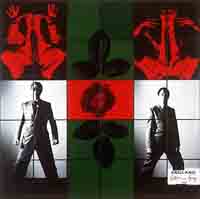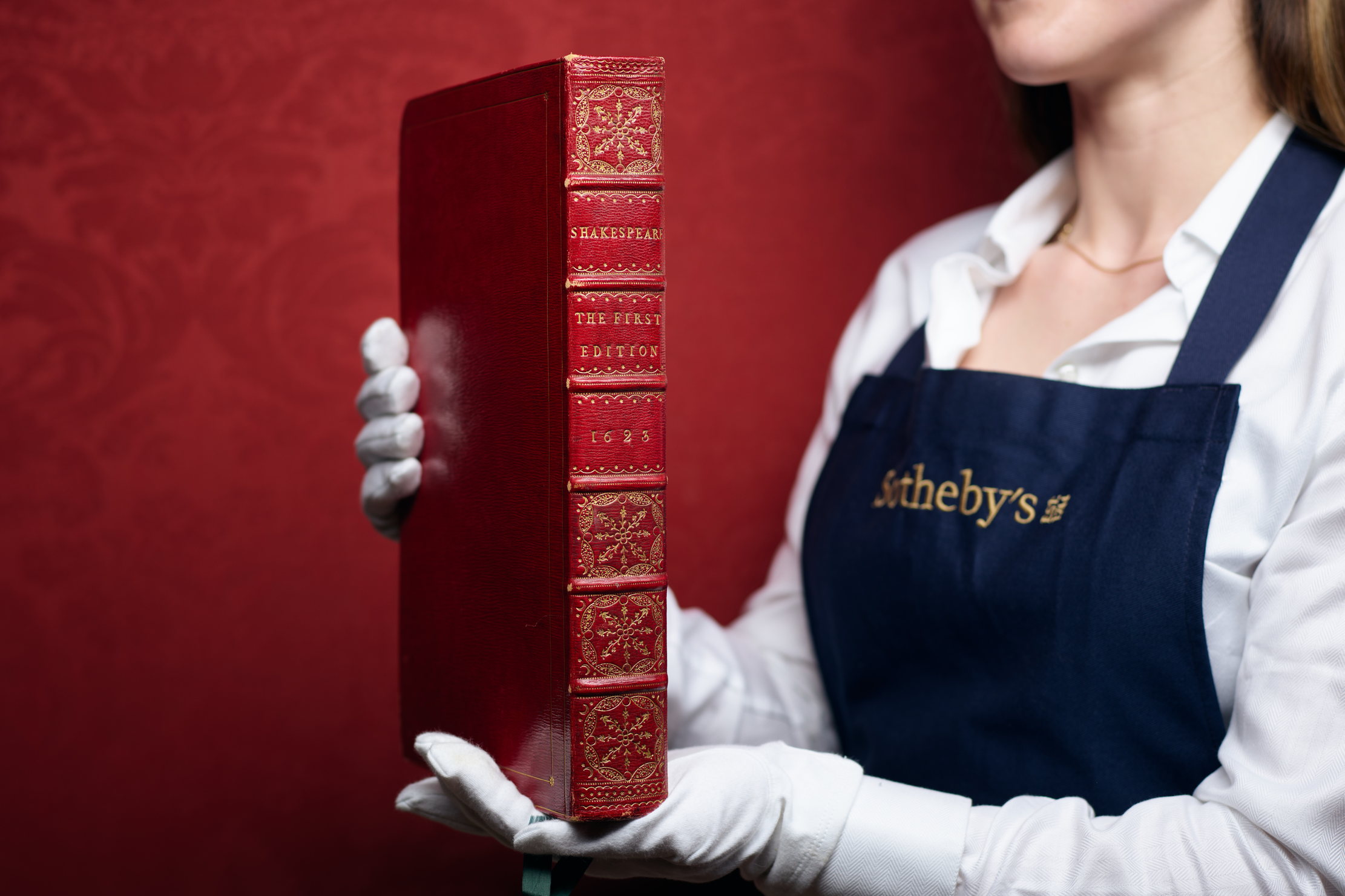Gilbert and George at TATE Modern
Jeremy Musson talks to the artists Gilbert and George about their major new retrospective at Tate Modern, which opens today.


Gilbert and George have become an institution. Their provocative artworks are a recognised part of the late-20th-century story of art and can be found in private country-house collections as well as in Tate Britain. They are almost a landmark in the hubbub of changing London, and they have made their lives a deliberate artistic spectacle since they first met at St Martin's School of Art in 1967.
Moreover, they are now enjoying the special privilege of a major retrospective taking over an entire floor at Tate Modern?the first time this has happened for living artists?and are the first living British artists to exhibit at Tate Modern rather than Tate Britain. I met them there when they were assembling the show. They are, they say, being given 'tremendous freedom' for it by the Tate, and George observes that they do not imagine 'we will ever do a bigger one'.
The last retrospective of their work was more than 25 years ago at the Whitechapel Gallery, then under Nicholas Serota. This new exhibition will contain some 200 works and be arranged by the artists themselves, who always hang their own works in exhibitions. They measure the gallery and then make scale models of their works, before working out the installation. 'As far as possible, they are hung chronologically,' says Italian-born Gilbert. The pair also designed the catalogue themselves 'in two volumes;it weighs 18lb', Gilbert adds with glee.
This show is likely to be one of Tate Modern's great blockbusters, a spectacle of the artist-duo's large-scale and vividly coloured works, with their provocative exploration?the artists being both observers and the subject of a kind of relentless self-examination?of sexual desire, fear and alienation. Being outsiders is a conscious part of their journey. 'In 1977, when we showed our 'Dirty Words' pictures, they had not a single supporter,' says George. They have certainly had their imitators since.
Gilbert and George's use of the figurative and of bold, simple colour is part of a deliberate policy of accessibility (or 'democratisation') of the image. There is a parallel in late-19th-century stained glass, early-20th-century children's books, and the popular religious art of Europe and India today. Strong colours and figurative elements give any viewer an entry point. It is up to each individual to decide on the weight and meaning of the titles, the words that appear, and the depiction of bodily fluids, excrement and sexual parts?the most universal of references, whether we like to see them in art or not.
Their intention must be both to attract and repel at the same time. Of course, the shock value of much of their work has shifted considerably since 1981. There is a flavour of the humour and vivid intensity of the great 18th-century caricaturists?shocking, challenging, intense, sometimes confusing, but also courageous and independent. They readily acknowledge the change in artistic freedoms and the marketplace. George says: 'Everything changed after 1980. The young artists today are all Thatcher's babies.'
In some ways, the canvas for Gilbert and George's story has been, since 1968, their home in Fournier Street, Spitalfields. Gilbert observes: 'When we arrived, the atmosphere was very Dickensian.' We are familiar with the East End as being a magnet for artists today, and for the wave of restoration that has swept the early Georgian terraces around Hawksmoor's Christ Church. But Gilbert and George were, in more ways than one, the first. George observes: 'I first went there because it was cheap. Each floor was available to rent and the landlords had no interest in whether you used it to live or work in. Most of the other houses were furrier workshops; Yiddish was the dominant language.'
Sign up for the Country Life Newsletter
Exquisite houses, the beauty of Nature, and how to get the most from your life, straight to your inbox.
The pair were the first to restore a house on this now famous street to a single dwelling, and they own more than one today. 'They are amazingly hard to restore, very vulnerable,' observes Gilbert. The two also collect 19th-century and early-20th-century furniture, and own chairs by Pugin and vases by Christopher Dresser.
One of their better-known characteristics is their conventional suited attire, but if you have ever glimpsed them walking through the dark-suited crowds outside Liverpool Street, you will know that it is the colours of their suits that set them apart, as if visitors from another planet.
These walks, they assert, are for recreation. Walking and looking at the city's architecture are their principal pleasures. But the press of human life experienced in London?and the part that buildings or the built environment plays in it all?is a thread in their works. They talk about the cosmopolitan quality of London, and in particular of the area around Liverpool Street?'Typical Planet Earth, we call it.'
In many of their works, one can see hints of architecture and London streets, and the potential for alienation that lies in a city. George says: 'We took a lot of photographs of Brutalist buildings in London, many of which have now been demolished and are probably unrecorded except in our photographs.'
The basis of their work remains 35mm photographic images in black and white, but these are now scanned from negatives onto computers, rather than printed in the dark room. Gilbert observes: 'People ask us whether we miss the dark room, but we say we only miss the rubber gloves.' They have embraced computer technology in the past three or four years, but concede it took time to find the software that worked for them. George adds: 'It was difficult to show people the kind of blackness we needed.' But Gilbert observes: 'The language of the computer is the language of the darkroom: we talk of masking, layers, cutting.'
The newest works, never exhibited before, include six 'Bomb Pictures'. These grave images are based on the strange poetry of the newspaper placard, brief shock headlines to do with death and bombs. 'They work on two levels,' George says. 'One is an indictment of news-papers making us want to read about the things we fear, and the second is that each of these headlines represents a human story or tragedy.' Gilbert adds that these headlines are part of the daily reality of modern London: 'It is not necessary even to make them up.' It occurs to me that their own extraordinary story would be scarcely more believable in fictional form
'Gilbert and George: Major Exhibition' opens today at Tate Modern, SE1, and runs until May 17 (020?7887 8888)
Country Life is unlike any other magazine: the only glossy weekly on the newsstand and the only magazine that has been guest-edited by HRH The King not once, but twice. It is a celebration of modern rural life and all its diverse joys and pleasures — that was first published in Queen Victoria's Diamond Jubilee year. Our eclectic mixture of witty and informative content — from the most up-to-date property news and commentary and a coveted glimpse inside some of the UK's best houses and gardens, to gardening, the arts and interior design, written by experts in their field — still cannot be found in print or online, anywhere else.
-
 Spam: The tinned meaty treat that brought a taste of the ‘hot-dog life of Hollywood’ to war-weary Britain
Spam: The tinned meaty treat that brought a taste of the ‘hot-dog life of Hollywood’ to war-weary BritainCourtesy of our ‘special relationship’ with the US, Spam was a culinary phenomenon, says Mary Greene. So much so that in 1944, London’s Simpson’s, renowned for its roast beef, was offering creamed Spam casserole instead.
By Mary Greene
-
 Folio, Folio, wherefore art thou Folio? Shakespeare set to be auctioned by Sotheby's
Folio, Folio, wherefore art thou Folio? Shakespeare set to be auctioned by Sotheby'sFour Folios will be auctioned in London on May 23, with an estimate of £3.5–£4.5 million for 'the most significant publication in the history of English literature'.
By Lotte Brundle